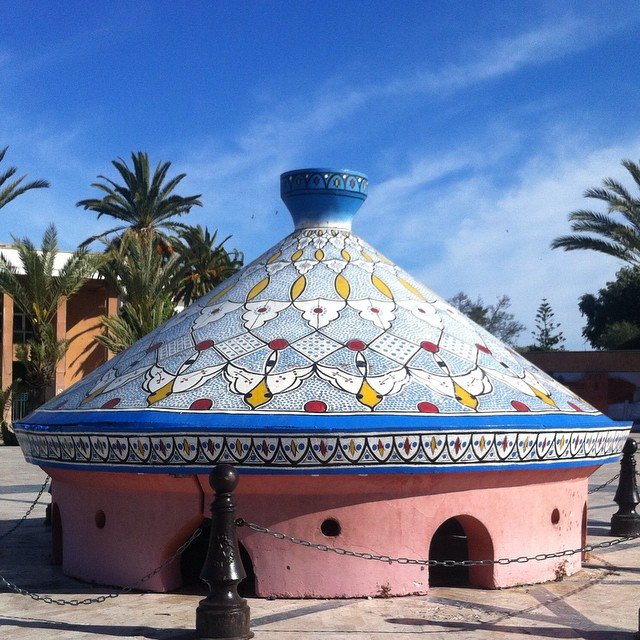tajine
The tagine dates back to Harun al-Rashid who was a ruler of the Early Muslim conquests.[6][7][8][9] The earliest writings about the concept of cooking in a tajine appear in the famous Alf layla wa layla (One Thousand and One Nights), an Arabic story collection from the 9th century.[9] It is also mentioned during the times of the Islamic reign of the Abbasid Empire (stretching from the Middle East/Asia to North Africa and Andalusia) during the 9th century.[10] The dish would have been already famous amongst the nomadic Bedouin people of the Arabian Peninsula, who added dried fruits like dates, apricots and plums to give it its unique taste. Tagine is often eaten with french fries, either on the top or on the side.
Today, the cooking-pot and its traditional broth is primarily prepared in the Middle East and North Africa. In North Africa it is called a Tajine, while in the Middle East it is called a "Maraq" (Arabic language: "broth") or a "Qidra" (Arabic language: cooking pot). There are different ways to prepare the tajine. In the original qidra style "saman" (Arabian clarified butter) is used to lubricate the surface and a puree of chopped onion is added for flavour and aroma. For "muqawlli" style cooking, the ingredients are placed in olive oil to enrich the flavours.
There are many descriptions of how to prepare a tajine from Arab scholars from the mid-centuries.[11] A famous description is the one from Ibn al-Adim, here translated into English:
Boil the meat and fry with fresh coriander, onions and hot spices and a little garlic. Then pick out the fennel hearts and cut in half. Put over the meat. Put back some of the broth on it along with sheep's tail. Boil until cooked and the broth has been absorbed. Remove (from the heat)
